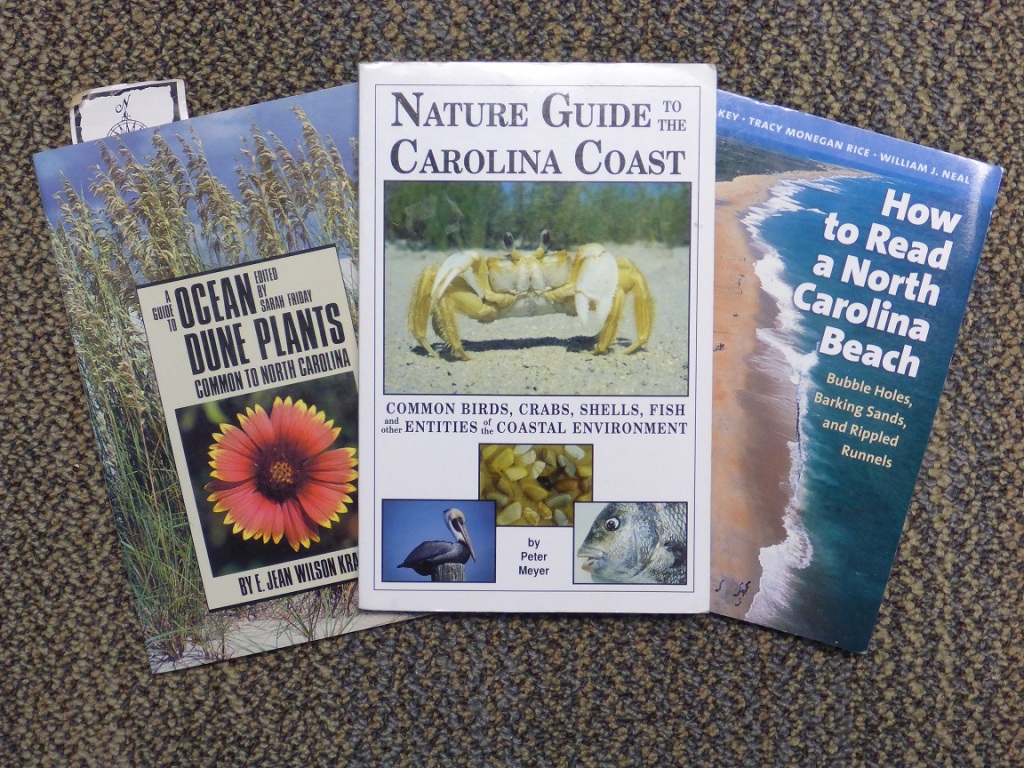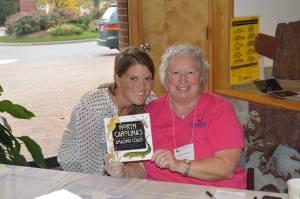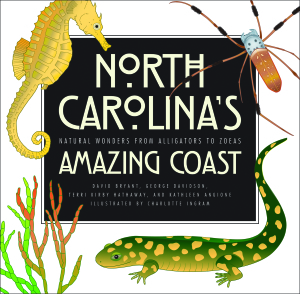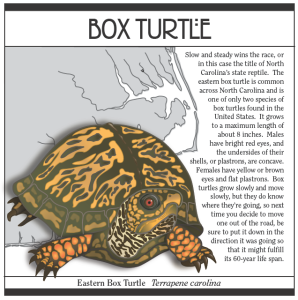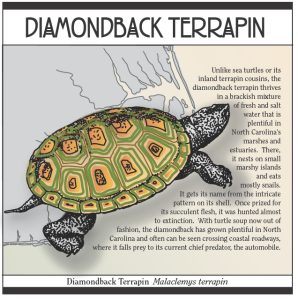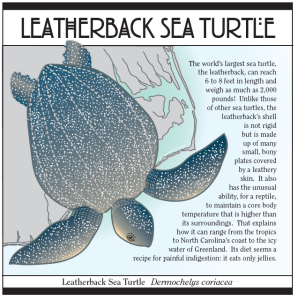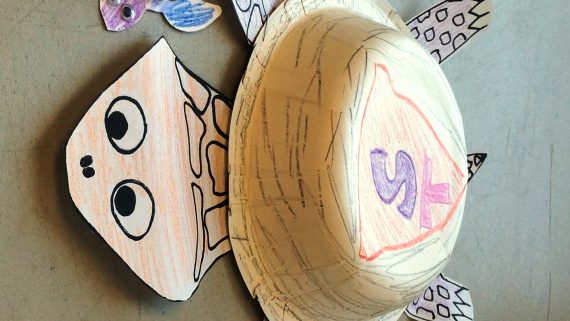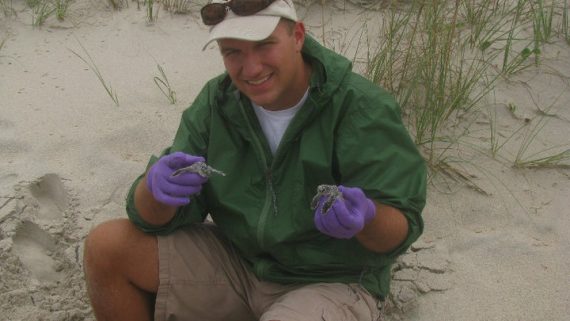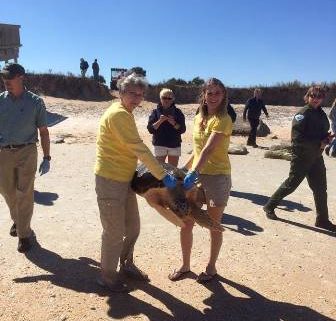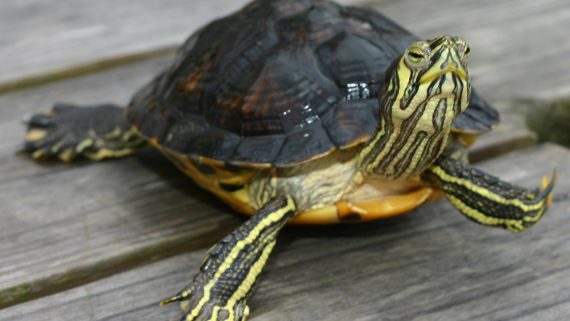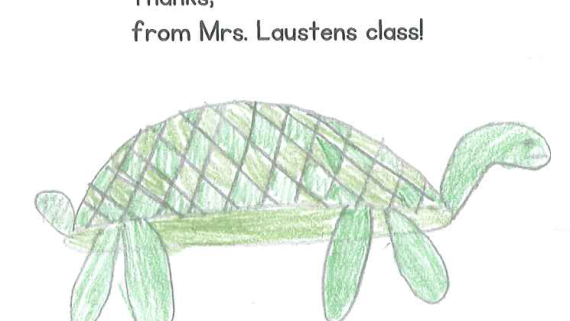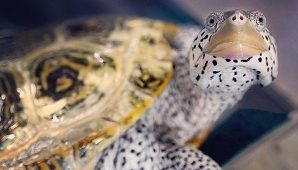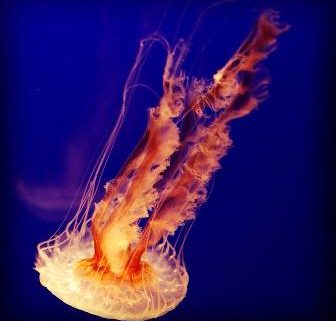Writing About Science
This week we have a guest post from someone who uses writing to teach about science. Even if you don’t think science is your best subject, there are still ways to work with and protect animals like sea turtles.
My name is Terri Kirby Hathaway and I am the marine education specialist for North Carolina Sea Grant. Although I am based on NC’s Outer Banks, I travel along the coast and across the state working with educators, students and the citizens of our state.
I have worked in marine education for 30 years for three main reasons: I enjoy working with people, I love our coast and I want everyone to appreciate it as much as I do!
The combination of spending so much time out in nature as a kid and watching Jacques Cousteau, a famous marine explorer and conservationist, on TV led me to my current career. I majored in marine biology at UNC Wilmington and worked as a scientist on the Gulf coast for six years. After those years doing field and lab work, I discovered I wanted to work with people. My first job in marine education was at the NC Marine Resources Center in Manteo, which was renamed the NC Aquarium on Roanoke Island in 1986.
Working as the Education Curator at the NC Aquarium was one of the best jobs EVER! After spending all my days with phytoplankton, zooplankton, and fish samples, I enjoyed sharing my knowledge of the marine environment with live people!
I recently co-authored a book about our wonderful coast. North Carolina’s Amazing Coast: Natural Wonders from Alligators to Zoeas focuses on the flora, fauna, and habitats of the NC coastal region. With 100 illustrations, this book covers a lot of territory and keeps the reader entertained. I read Georgia’s Amazing Coast in 2005 and wondered why we couldn’t do a similar one for North Carolina, and so the project was born!
Kathleen Angione, a communicator with NC Sea Grant, and I worked with the authors of the Georgia book. We deleted some plates specific to Georgia and replaced ones found in North Carolina. For example, we substituted the spadefoot toad for the pig frog and the red wolf for the coyote.
It was great fun researching facts and figures and coming up with exactly what words to use to describe each plant or animal. We kept the text informative, yet light, including both facts and opinions.
Distinguishing between fact and opinion is an activity that be done with all ages! Here’s an excerpt from the text for the Margined Sea Star: “The margined sea star prefers small clams, often eaten whole, but just because it’s a star doesn’t mean it has class. After a meal, it regurgitates the shells, along with sand and other indigestible materials.” Can you pick out the true facts in those two sentences? What is fact and what is opinion?
Next on the project list is a collection of student activities to complement North Carolina’s Amazing Coast so elementary teachers can use the book in their classrooms. If you’re interested in the book, ask for it at your local Aquarium gift shop!
I hope you enjoyed meeting Terri! How can you use writing to learn science? Check out our lesson The Big Book of Turtles. As a class you will create your own encyclopedia of turtles. It is a great way to practice research skills, writing skills, and even your artistic skills!
This week our turtles continue to grow. This week Turtle A is 11.9 centimeters long and weighs 304.8 grams. Turtle B is 12.8 centimeters and weighs 365.3 grams. Not sure what to do with this weight and length? Learn more in our Hatchling to Yearling lesson plan.


